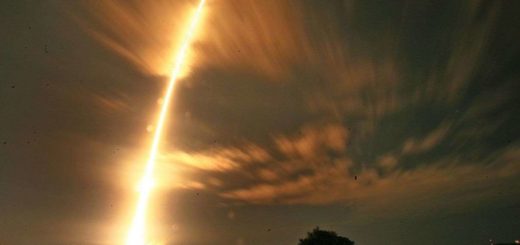How the Milky Way Works

A look at the night sky at any time of year will reveal a faint band of light stretching across the sky, either through the middle or near the horizon. The ancient Greeks saw this band of light and called it “galaxies kuklos,” for “milk circle.” The Romans called it the “Milky Way.” In 1610, Galileo used the first telescopes and determined that the light of the Milky Way comes from billions of dim stars that surround us.
For centuries, astronomers asked many basic questions about the Milky Way. What is it? What is it made of? What is it shaped like? These questions were difficult to answer for several reasons.
We live inside the Milky Way. It’s like living inside a gigantic box and asking, what is the box shaped like? What is it made of? How do you know?
Early astronomers were limited by technology. The early telescopes weren’t very large, didn’t have much range and couldn’t magnify great distances or resolve them.
Early telescopes could detect only visible light. The Milky Way contains a lot of dust that obstructed their views. In some directions, looking at the Milky Way is like looking through a dust storm.
The 20th century brought great advancements in telescope technology. Large optical, radio, infrared, and X-ray telescopes (both ground-based and orbiting space telescopes) allowed astronomers to peer through the vast quantities of dust and far into space. With these tools, they could piece together what the Milky Way actually looks like.
What they discovered was amazing:
The Milky Way is actually a galaxy — a large system of stars, gas (mostly hydrogen), dust and dark matter that orbits a common center and is bound together by gravity.
Our galaxy is spiral-shaped.
Contrary to popular belief, our solar system is not at the center of the galaxy.
The Milky Way is but one of billions of galaxies in the universe.
Come follow us on a journey of discovery as we explore the Milky Way. We’ll examine how astronomers figured out its shape, size and structure. We’ll look at how the stars within it move and how the Milky Way compares to other galaxies.
Contents
Early Milky Way Theories
Globular Clusters and Spiral Nebulae
What shape is the Milky Way?
Milky Way Structure
How many stars are in the Milky Way?
Early Milky Way Theories
As we mentioned, Galileo discovered that the Milky Way is made of dim stars, but what about its shape? How can you tell the shape of something if you’re inside it? In the late 1700s, astronomer Sir William Herschel addressed this question. Herschel reasoned that if the Milky Way was a sphere, we should see numerous stars in all directions. So, he and his sister Caroline counted the stars in more than 600 areas of the sky. They found that there were more stars in the directions of the band of the Milky Way than above and below. Herschel concluded that the Milky Way was a disk-shaped structure. And because he found about the same numbers of stars in all directions along the disk, he concluded that the sun was near the center of the disk.
Around 1920, a Dutch astronomer named Jacobus Kapetyn measured the apparent distances to nearby and remote stars using the technique of parallax. Because parallax involved measuring the motions of stars, he compared the motions of distant stars with nearby ones. He concluded that the Milky Way was a disc approximately 20 kiloparsecs, or 65,000 light years, in diameter (one kiloparsec = 3,260 light years). Kapetyn also concluded that the sun was at or near the center of the Milky Way.
But future astronomers would question these ideas, and advanced technology would help them dispute the theories and come up with more accurate measurements.



 Creators of mankind
Creators of mankind Description of “Tall white aliens”
Description of “Tall white aliens” Where they came from?
Where they came from? About hostile civilizations
About hostile civilizations The war for the Earth
The war for the Earth “Tall white aliens” about eternal life
“Tall white aliens” about eternal life Video: “Nordic aliens”
Video: “Nordic aliens” Aliens
Aliens Alien encounters
Alien encounters The aliens base
The aliens base UFO
UFO Technology UFO
Technology UFO Underground civilization
Underground civilization Ancient alien artifacts
Ancient alien artifacts Military and UFO
Military and UFO Mysteries and hypotheses
Mysteries and hypotheses Scientific facts
Scientific facts


















